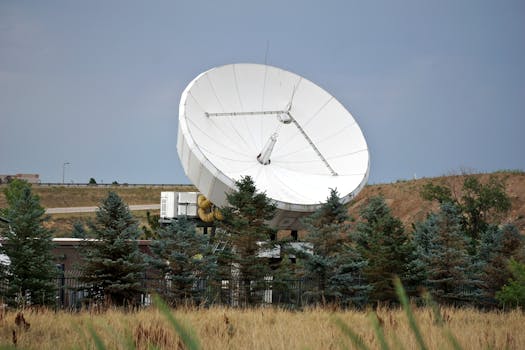The Future of Connectivity: Latest Breakthroughs in Satellite Telecommunications

The Future of Connectivity: Latest Breakthroughs in Satellite Telecommunications
The Future of Connectivity: Latest Breakthroughs in Satellite Telecommunications is a rapidly evolving field that is transforming the way we live, work, and communicate. With the increasing demand for global connectivity, satellite telecommunications are playing a vital role in providing internet access to remote and underserved areas. In this article, we will explore the latest breakthroughs in satellite telecommunications and their impact on the future of connectivity.
Introduction to Satellite Telecommunications
Satellite telecommunications involve the use of satellites to transmit and receive data, voice, and video signals. Satellites are launched into orbit around the Earth, where they can communicate with ground stations and other satellites to provide a wide range of services, including internet access, television broadcasting, and mobile phone connectivity. Satellite telecommunications have been around for several decades, but recent advancements in technology have made them faster, more reliable, and more accessible than ever before.
Latest Breakthroughs in Satellite Telecommunications
One of the latest breakthroughs in satellite telecommunications is the development of high-throughput satellites (HTS). HTS are designed to provide high-speed internet access to a large number of users, making them ideal for applications such as broadband internet, video streaming, and online gaming. HTS use advanced technologies such as frequency reuse and beamforming to increase the amount of data that can be transmitted through a single satellite. This has resulted in a significant increase in the speed and capacity of satellite telecommunications, making them more competitive with traditional fiber-optic and cable-based services.
Another breakthrough in satellite telecommunications is the use of low-Earth orbit (LEO) satellites. LEO satellites are launched into orbit at an altitude of around 1,000 to 2,000 kilometers, which is much lower than traditional geostationary satellites. This lower altitude reduces the latency of satellite communications, making them more suitable for real-time applications such as video conferencing and online gaming. LEO satellites are also less expensive to launch and maintain than traditional satellites, making them an attractive option for companies looking to provide global connectivity.
Impact of Satellite Telecommunications on the Future of Connectivity
The latest breakthroughs in satellite telecommunications are having a significant impact on the future of connectivity. With the increasing demand for global connectivity, satellite telecommunications are providing internet access to remote and underserved areas, bridging the digital divide and enabling new opportunities for economic growth and development. Satellite telecommunications are also providing backup connectivity during natural disasters and outages, ensuring that critical communications systems remain operational.
In addition, satellite telecommunications are enabling new applications and services, such as IoT connectivity, smart cities, and autonomous vehicles. The use of satellite telecommunications is also reducing the cost of connectivity, making it more accessible to a wider range of users. With the continued advancement of technology, satellite telecommunications are expected to play an increasingly important role in the future of connectivity, providing fast, reliable, and accessible internet access to users around the world.



